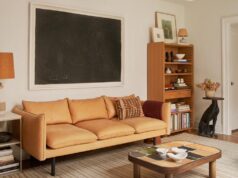The concept of “home” can be a fraught one in Palestine, with growing tensions between the symbolic and the actual. Even before forced evictions from Sheikh Jarrah sparked a conflict that resulted in a bombing campaign that destroyed basic infrastructure and displaced some 74,000 Gaza residents earlier this month, there was an urgent need for housing. Some 2,000 housing units were also destroyed.
For one thing, Gaza has never fully recovered from the 2014 war between Israel and Hamas, while settlement building—which is widely viewed as illegal—in the West Bank helps cause rising land costs that make home ownership unaffordable for many families. But while larger political issues remain unresolved, new housing prototypes by Palestinian architects could well become catalysts for a kind of peace.
Gazan architect Salem al Qudwa, a fellow in conflict and peace at the Harvard Divinity School, and contributor to a new book called Open Gaza: Architectures of Hope, has developed a green, flexible, and affordable model for self-built homes in Gaza. They are designed to be constructed on sand and rubble, and can create a “nurturing and safe environment for women and children, and to empower communities.”
A prototype of Salem’s Gaza housing scheme
In 2014, after the last major war left so many displaced, Al Qudwa says that international agencies built housing that was inappropriate to local needs and climate. These included temporary wooden structures that did not accommodate large extended families, isolating people from their multigenerational support networks, and didn’t provide proper insulation for heating and cooling. He contends this was because United Nations Relief and Works Agency for Palestine Refugees in the Near East (UNRWA) and other agencies employed foreign architects and didn’t consult locals. Now, as the U.S. pledges to give millions of dollars in emergency reconstruction aid, Al Qudwa fears the cycle will repeat itself again.
Part of the challenge, he says, beyond the Israeli blockade in place since 2007 that limits availability of building supplies, is that “Annihilation in the Gaza Strip has become so frequent that houses are being built, destroyed and reconstructed at the same time.” But on a hopeful note, al Qudwa sees the “architecture of the every-day” as a resource for “positive social transformation.”
His prototype is for three five-story homes made of concrete with proper insulation and strong foundations, a key component in creating a sense of permanence in the midst of uncertainty. As opposed to the wooden homes built as temporary shelters after 2014, this model will allow families to grow and will accommodate Gaza’s many widows, who often have to sacrifice their autonomy by moving in with their in-laws. The prototypes are also safer, Al Qudwa contends, in terms of not likely being targeted by Israeli bombing, than the plethora of high-rises that sprang up post-1994, when so many Palestinians returned from the diaspora just after the Oslo Accords were signed (such as the 13-story Al Jawhara tower destroyed by the Israeli Defense Forces (IDF) on May 12) and are more cost effective than current models.









